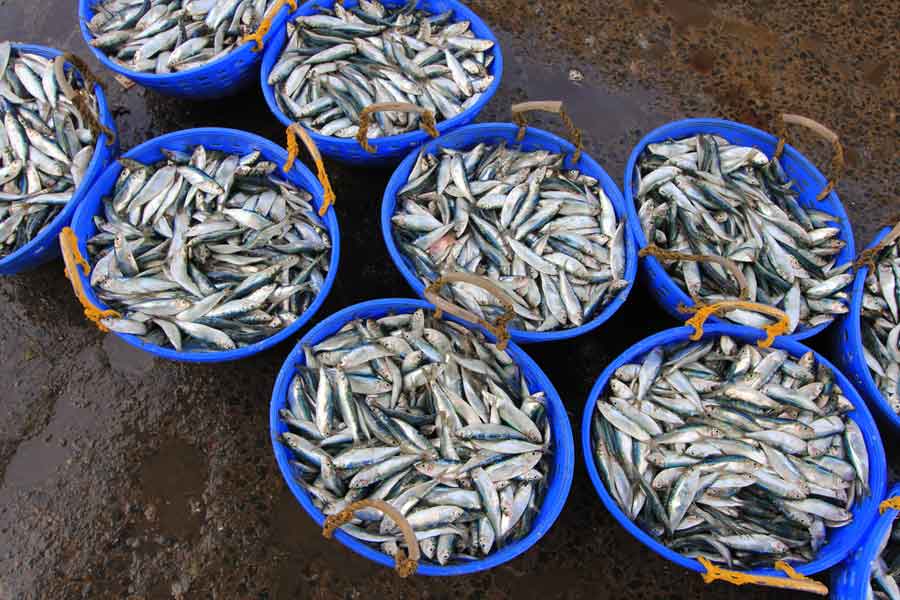Fish-loving Bengalis — often maligned for their love for all things piscine — now have a reason to be smug: they seem to have passed on their love of fish to Indians. The latest data from the National Council of Applied Economic Research show that the consumption of fish per household has almost doubled in the country in ten years to over 13 kilogrammes per capita per annum in 2022-23 from 7 kg in 2011-12. While the current per capita consumption is still lower than the international estimate of 20.5 kg per capita (2019-20), it has the potential to reach 21.4 kg by 2031.
But not everyone would like to be stuffed to the gills. Take, for instance, the All India Fish Protection Committee — it reportedly had among its members a few Bharatiya Janata Party leaders — which surfaced in West Bengal just before the last assembly elections and threatened to give a sound thrashing to anyone eating fish. The reasoning was typically mythical: Vishnu’s matsya avatar apparently makes fish-eating sinful. But Bengal retaliated by choosing fish over the AIFPC and its brethren.
But food choices remain vulnerable to the prevailing political, economic and cultural temperaments. A study by the Indian Council of Medical Research showed that not only is India’s per capita consumption of meat and eggs — an important source of protein — far below the recommended levels but it has also been slowing since 2014. It cannot be a coincidence that this inertia is evident at a time of the political ascendancy of a regime that salivates at the prospect of imposing vegetarianism on a predominantly meat and fish-eating nation. Meat’s loss has been fish’s gain though. Research shows that relatively cheap, farmed fish like carp and tilapia have gained popularity among the poor as a replacement for expensive, frowned-upon alternatives. But even then, not everybody is entitled to a fillet. Women, especially those hailing from impoverished families, have to settle for fins and bones. The gender disparities in the consumption of fish adversely affect women’s health, raising their risk of anaemia.
But who will save the saviour? As many as 120 species of freshwater fish in India are threatened and in need of immediate protection. But the Wildlife (Protection) Act of 1972 only cares for such species as marine sharks, rays and some 15 molluscs. Hundreds of indigenous fish species are thus at risk on account of over-fishing, depletion of water bodies, and riverine pollution while their brethren at sea are perishing at the hands of trawlers and deadly nets.
It is thus heartening that the West Bengal environment ministry has started a new initiative to conserve small fish varieties like pnuti and folui. Fishing practices that strike a balance between the catch at sea and its health must be invested in. India and Bengal could look at Bangladesh which has scripted a remarkable comeback for the famed Hilsa. The National Fisheries Policy, 2020 merely focuses on growth. But growth will be elusive unless it takes into consideration attendant ecological, economic and cultural challenges.










